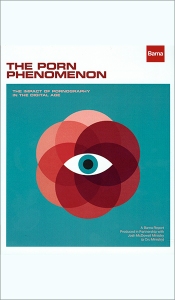 This article first appeared at InfluenceMagazine.com.
This article first appeared at InfluenceMagazine.com.
Barna Group, The Porn Phenomenon: The Impact of Pornography in the Digital Age (Ventura, CA: Barna, 2016).
“Thirty years ago, pornography arrived in the mail wrapped in discreet black plastic.” So begins The Porn Phenomenon, a new report from Barna Group, the well-respected evangelical polling firm. “Today, porn slips invited or not onto every screen with an Internet connection. For that matter, much of it originates in regular households with a wireless signal.”
The ubiquity of porn has changed attitudes about it, for the worse. According to Barna, “Only one in 10 teens and one in 20 young adults says their friends think viewing pornography is a bad thing.” This casual—even affirmative—attitude about porn masks what researchers are beginning to reveal about its “significantly negative impact on society, relationships, and individuals.” In the words of The Porn Phenomenon’s back page: “The porn crisis is not coming… It is here.”
To help the Church better address this crisis, Barna conducted four quantitative surveys with 2,771 participants that focused on “perceptions of pornography, exposure, use, and attitudes toward use.” It also conducted open-ended qualitative surveys with 32 adults and 20 pastors on the topics of “porn and sexual addiction.” These surveys were anonymous. Supplementing this original research, Barna surveyed existing social science research on the topic and conducted on-the-record interviews with Christian thought leaders on this topic.
The Porn Phenomenon outlines its findings in five chapters: “The Landscape of Porn” (chapter 1), “The Uses of Porn” (chapter 2), “Porn and Morality” (chapter 3), “The Impact of Porn” (chapter 4), and “What Can We Do About Porn?” (chapter 5). Throughout, Barna uses well-designed info graphics to present salient data points, such as:
- 51 percent of all Americans seek out porn at least occasionally
- 57 percent of young adults seek porn at least once a month
- 46 percent of men seek out porn at least once a month
- 13 percent of practicing Christians seek out porn at least once a month
- 55 percent of adults 25+ say viewing porn is wrong
- 32 percent of teens and young adults say viewing porn is wrong
- Teens and young adults rank not recycling as more immoral than viewing porn
- 1 in 5 youth pastors and 1 in 7 senior pastors use porn
- 70 percent of self-identified Christians say a pastor should leave ministry if he uses porn
Barna Groups closes The Porn Phenomenon with helpful advice about what the Church can do to stem the tide of pornography. Its final point is to “promote a robust biblical counter-narrative to porn”:
Rather than treating [sex] as [a dirty word], we must celebrate and promote God’s good intentions for sex as a counter-narrative to the false stories told by pornography. Church leaders must steer their congregations in more hopeful directions, away from the distorted picture of sex touted by porn, to a fuller and more biblical vision for sex. This means actually talking about sex and pornography, and contrasting God’s plans with porn’s lies early and often.
Amen to that!
I recommend this report to senior pastors, youth pastors, children’s pastors, and congregational thought leaders, such as board members and Sunday school teachers. Church leaders need to know the nature and scope of the porn phenomenon if they are going to combat it effectively.
The Porn Phenomenon is available for purchase from Barna.org. Listen to my podcast about the study with Roxanne Stone, Editor in Chief of Barna Group.
Leave a reply to Jonathan Kanner Cancel reply